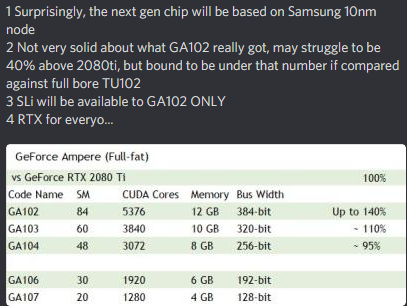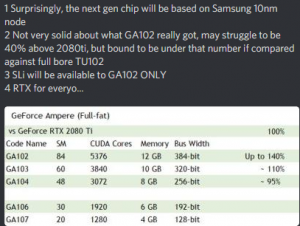I foresee a ~40-50% performance gain when utilizing RT and DLSS over the 20x0 non-Super cards as they'll be better tailored for those now more mature technologies. But without these features enabled the gain in overall performance will only be another ~30-35% for each card tier.
I also predict the performance of the fastest "Big Navi" card to barely nip at the heels of a 2080 Super when DXR features aren't used, while still a solid 10-20% behind once RT is enabled. And that's with me more than a little optimistic on the part of AMD here.
If that's the case, then thats underwhelming to say the least.
![[H]ard|Forum](/styles/hardforum/xenforo/logo_dark.png)


